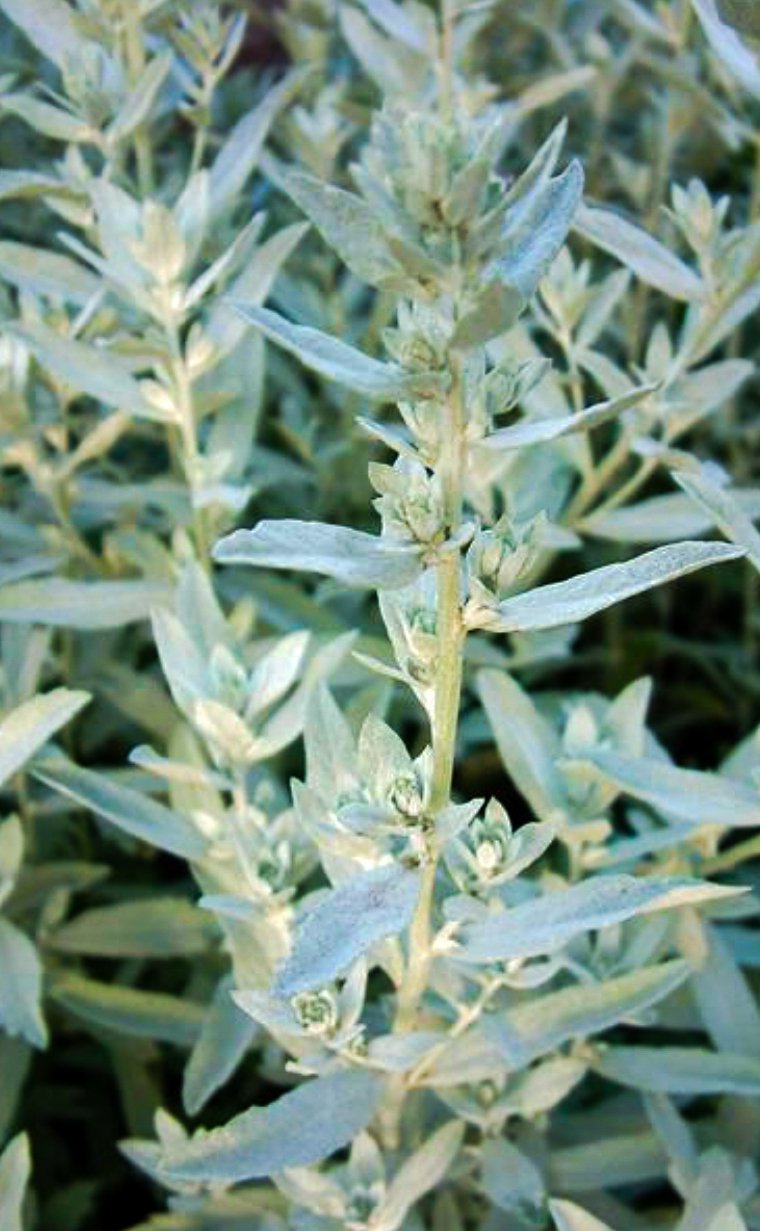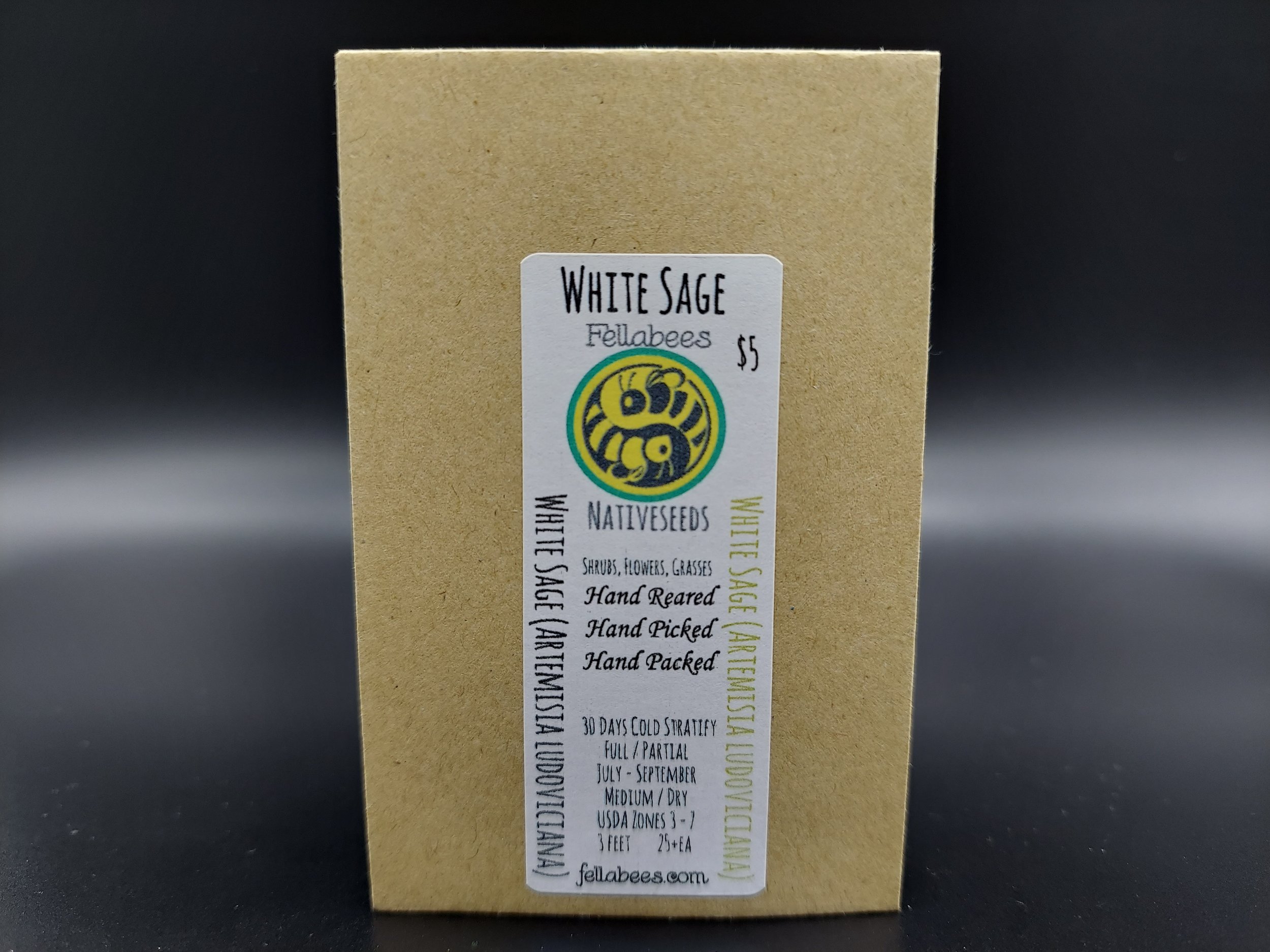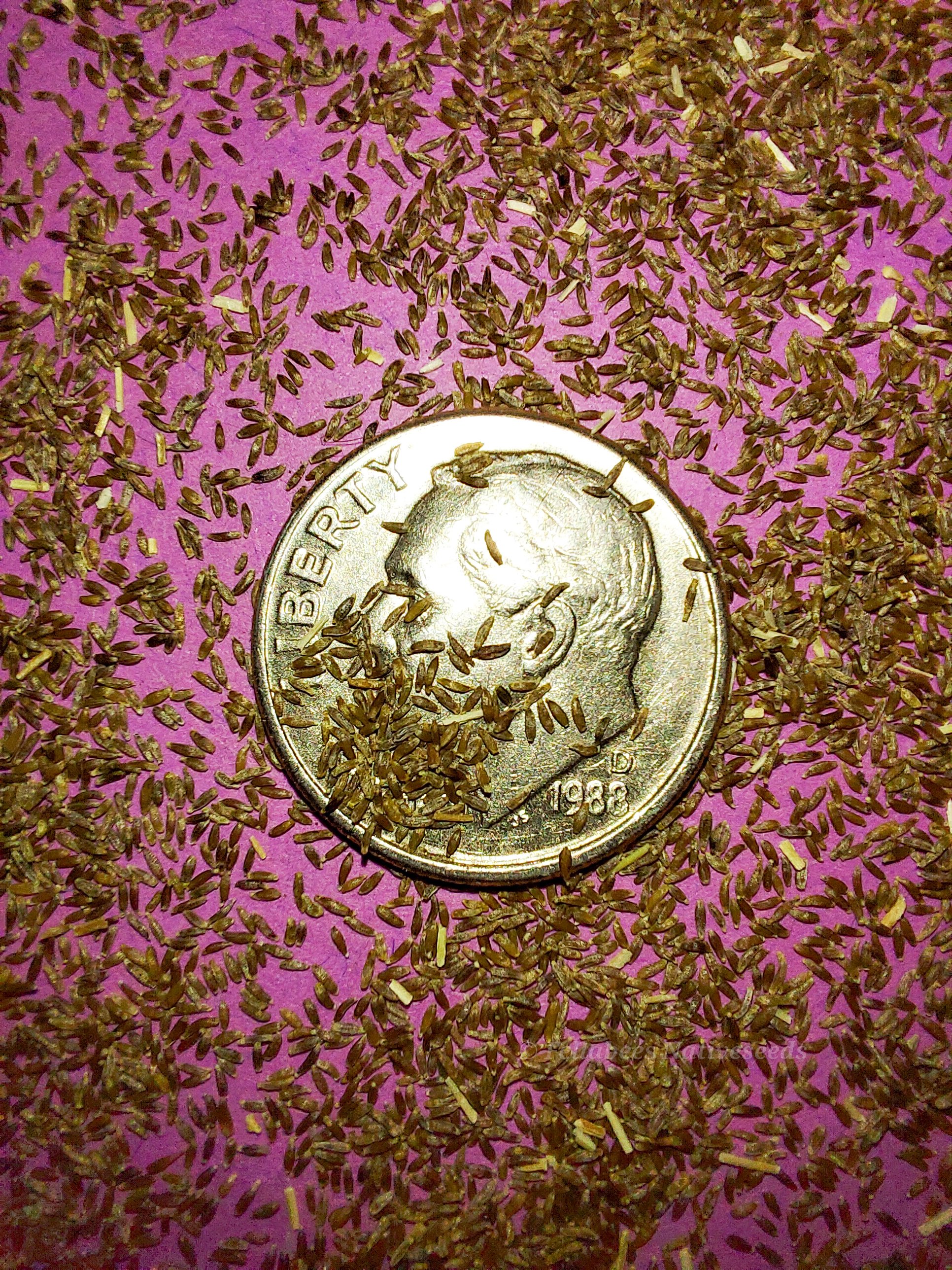 Image 1 of 3
Image 1 of 3

 Image 2 of 3
Image 2 of 3

 Image 3 of 3
Image 3 of 3




White Sage (Artemisia ludoviciana)
White Sage (Artemisia ludoviciana)
Artemisia ludoviciana is a popular North American species of native flowering plant in the Asteraceae family.
Given its popularity and use, it is known by several common names, including White Sage, Silver Wormwood, Western Mugwort, Louisiana Wormwood, White Sagebrush, Lobed Cud-Weed, Prairie Sage and Gray Sagewort.
Native to much of North America where it is found widespread across the majority of the United States, Canada, and Mexico. Some botanists suggest that eastern United States populations have been introduced from the western and central part of the continent, and that it was brought east by the early indigenous peoples of the continent. Its preferred habitats include dry slopes, canyons, open pine woods, and dry prairies.
Indigenous Americans use the species as a medicinal plant, as a source of fiber for crafting household items, and for ceremonial purposes.
The Dakota peoples use this plant in smudging rituals to protect against maleficent spirits.
The Apache, Chiricahua and Mescalero use it for spices, while Blackfoot tribe use it as a drug for dermatological. Gros Ventre also use it for skin curing and as medicine against cold, because it is also antipyretic. (What is an antipyretic? An antipyretic (/ˌæntipaɪˈrɛtɪk/, from anti- 'against' and pyretic 'feverish') is a substance that reduces fever. Antipyretics cause the hypothalamus to override a prostaglandin-induced increase in temperature. The body then works to lower the temperature, which results in a reduction in fever.) The Meskwaki and Potawatomi use a tea made from this species as a treatment for sore throat and tonsillitis.
Plant Details
USDA Zones: 3-7
Germination Needs: 30 days Cold Stratification. Surface sown seed needs light and very little or no soil over top in order to germinate. Seed is very small and should be bottom watered if started in trays after the stratification period.
Life Cycle: Perennial
Sun Exposure: Full to Partial
Soil Moisture: Medium, Medium-Dry, Dry
Plant Spacing: 1-2 feet
Height: 3 feet
Bloom time: July, August, September
Bloom Color: Yellow/Green
Advantages :
Deer Resistant: Yes
Excellent in the home landscape!
.
.
Packet quantities:
We pride ourselves on ethical, hands on, ecological management, using no mechanical or chemical methods whatsoever.
All of our native seed is hand reared, hand picked, and hand packed from native prairies under our exclusive management, never breaking chain of custody from the field until it is sent to you. Each packet is hand prepared for shipment by us, directly.
Small seed species will contain greater than 20-25 seed
Large seed species will contain greater than 10-15 seed
It is our mission to spread the wealth of native plant and pollinator ecological sustainability, and educate back yard gardeners as well as corporate and government entities in how to germinate, grow, and benefit from native synergies.
Thank you for your support, it is because of you, that we can grow together to do, what we do.🐛🦋🐝🐞🌾🌱🌼🧡
White Sage (Artemisia ludoviciana)
Artemisia ludoviciana is a popular North American species of native flowering plant in the Asteraceae family.
Given its popularity and use, it is known by several common names, including White Sage, Silver Wormwood, Western Mugwort, Louisiana Wormwood, White Sagebrush, Lobed Cud-Weed, Prairie Sage and Gray Sagewort.
Native to much of North America where it is found widespread across the majority of the United States, Canada, and Mexico. Some botanists suggest that eastern United States populations have been introduced from the western and central part of the continent, and that it was brought east by the early indigenous peoples of the continent. Its preferred habitats include dry slopes, canyons, open pine woods, and dry prairies.
Indigenous Americans use the species as a medicinal plant, as a source of fiber for crafting household items, and for ceremonial purposes.
The Dakota peoples use this plant in smudging rituals to protect against maleficent spirits.
The Apache, Chiricahua and Mescalero use it for spices, while Blackfoot tribe use it as a drug for dermatological. Gros Ventre also use it for skin curing and as medicine against cold, because it is also antipyretic. (What is an antipyretic? An antipyretic (/ˌæntipaɪˈrɛtɪk/, from anti- 'against' and pyretic 'feverish') is a substance that reduces fever. Antipyretics cause the hypothalamus to override a prostaglandin-induced increase in temperature. The body then works to lower the temperature, which results in a reduction in fever.) The Meskwaki and Potawatomi use a tea made from this species as a treatment for sore throat and tonsillitis.
Plant Details
USDA Zones: 3-7
Germination Needs: 30 days Cold Stratification. Surface sown seed needs light and very little or no soil over top in order to germinate. Seed is very small and should be bottom watered if started in trays after the stratification period.
Life Cycle: Perennial
Sun Exposure: Full to Partial
Soil Moisture: Medium, Medium-Dry, Dry
Plant Spacing: 1-2 feet
Height: 3 feet
Bloom time: July, August, September
Bloom Color: Yellow/Green
Advantages :
Deer Resistant: Yes
Excellent in the home landscape!
.
.
Packet quantities:
We pride ourselves on ethical, hands on, ecological management, using no mechanical or chemical methods whatsoever.
All of our native seed is hand reared, hand picked, and hand packed from native prairies under our exclusive management, never breaking chain of custody from the field until it is sent to you. Each packet is hand prepared for shipment by us, directly.
Small seed species will contain greater than 20-25 seed
Large seed species will contain greater than 10-15 seed
It is our mission to spread the wealth of native plant and pollinator ecological sustainability, and educate back yard gardeners as well as corporate and government entities in how to germinate, grow, and benefit from native synergies.
Thank you for your support, it is because of you, that we can grow together to do, what we do.🐛🦋🐝🐞🌾🌱🌼🧡
White Sage (Artemisia ludoviciana)
Artemisia ludoviciana is a popular North American species of native flowering plant in the Asteraceae family.
Given its popularity and use, it is known by several common names, including White Sage, Silver Wormwood, Western Mugwort, Louisiana Wormwood, White Sagebrush, Lobed Cud-Weed, Prairie Sage and Gray Sagewort.
Native to much of North America where it is found widespread across the majority of the United States, Canada, and Mexico. Some botanists suggest that eastern United States populations have been introduced from the western and central part of the continent, and that it was brought east by the early indigenous peoples of the continent. Its preferred habitats include dry slopes, canyons, open pine woods, and dry prairies.
Indigenous Americans use the species as a medicinal plant, as a source of fiber for crafting household items, and for ceremonial purposes.
The Dakota peoples use this plant in smudging rituals to protect against maleficent spirits.
The Apache, Chiricahua and Mescalero use it for spices, while Blackfoot tribe use it as a drug for dermatological. Gros Ventre also use it for skin curing and as medicine against cold, because it is also antipyretic. (What is an antipyretic? An antipyretic (/ˌæntipaɪˈrɛtɪk/, from anti- 'against' and pyretic 'feverish') is a substance that reduces fever. Antipyretics cause the hypothalamus to override a prostaglandin-induced increase in temperature. The body then works to lower the temperature, which results in a reduction in fever.) The Meskwaki and Potawatomi use a tea made from this species as a treatment for sore throat and tonsillitis.
Plant Details
USDA Zones: 3-7
Germination Needs: 30 days Cold Stratification. Surface sown seed needs light and very little or no soil over top in order to germinate. Seed is very small and should be bottom watered if started in trays after the stratification period.
Life Cycle: Perennial
Sun Exposure: Full to Partial
Soil Moisture: Medium, Medium-Dry, Dry
Plant Spacing: 1-2 feet
Height: 3 feet
Bloom time: July, August, September
Bloom Color: Yellow/Green
Advantages :
Deer Resistant: Yes
Excellent in the home landscape!
.
.
Packet quantities:
We pride ourselves on ethical, hands on, ecological management, using no mechanical or chemical methods whatsoever.
All of our native seed is hand reared, hand picked, and hand packed from native prairies under our exclusive management, never breaking chain of custody from the field until it is sent to you. Each packet is hand prepared for shipment by us, directly.
Small seed species will contain greater than 20-25 seed
Large seed species will contain greater than 10-15 seed
It is our mission to spread the wealth of native plant and pollinator ecological sustainability, and educate back yard gardeners as well as corporate and government entities in how to germinate, grow, and benefit from native synergies.
Thank you for your support, it is because of you, that we can grow together to do, what we do.🐛🦋🐝🐞🌾🌱🌼🧡
